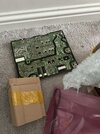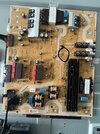Can I get some advice with this please.
I get no sign of life when I switch this TV on. I’ve tried holding down the power button in various fashions but that hasn’t booted it up. The fuse on the plug and socket are fine.
I’ve opened it up and have this:
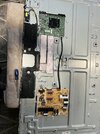
I’ve put my two pole tester on the fuse next to the power inlet and a bunch of other fuses/capacitors on this board and all have continuity.
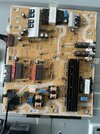
Except, this green “thingy”, to the right of the fuse. When I put the probes on each leg, there is no continuity. Should there be?
I then switched in the TV and used my contactless tester (I appreciate it’s not a great tester) but this shows power on the power supply board and the main board too.
I then disconnected this cable going between the two boards and powered up again
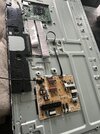
I read that this may bring the backlight to life. Not for me .
.
Have I got a dodgy power supply board or is this way too inconclusive? I would welcome your suggestions on how to resolve this.
Thanks in advance.
I get no sign of life when I switch this TV on. I’ve tried holding down the power button in various fashions but that hasn’t booted it up. The fuse on the plug and socket are fine.
I’ve opened it up and have this:

I’ve put my two pole tester on the fuse next to the power inlet and a bunch of other fuses/capacitors on this board and all have continuity.

Except, this green “thingy”, to the right of the fuse. When I put the probes on each leg, there is no continuity. Should there be?
I then switched in the TV and used my contactless tester (I appreciate it’s not a great tester) but this shows power on the power supply board and the main board too.
I then disconnected this cable going between the two boards and powered up again

I read that this may bring the backlight to life. Not for me
Have I got a dodgy power supply board or is this way too inconclusive? I would welcome your suggestions on how to resolve this.
Thanks in advance.


